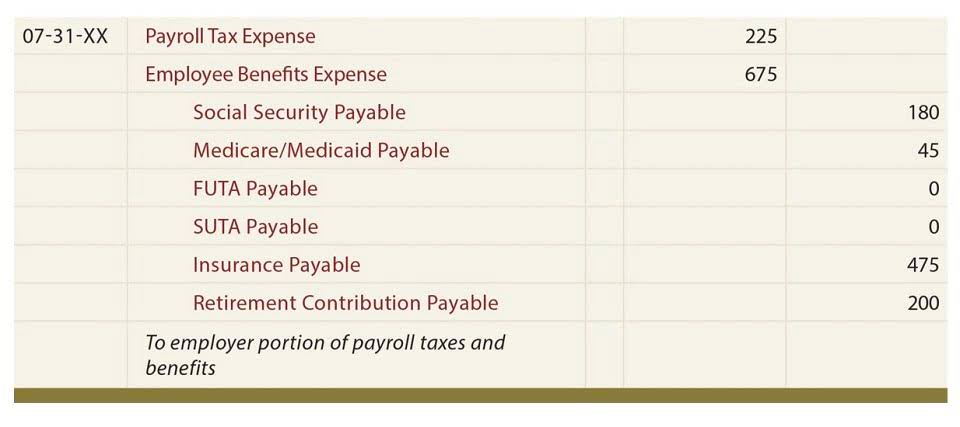
The pmt argument is filled with the payment per period ($200 in this case, supplied as a negative figure showing outflow for Cal). The future value is disregarded here while the next argument confirms the annuity type as regular or due. 0 is mentioned in the first instance but you may leave the cell blank or skip this argument as it would default to 0 anyway. For annuity-due, this argument will have to be filled as 1, like in the second instance.
What Is Present Value? Formula and Calculation

The overall present value formula approximation is accurate to within ±6% (for all n≥1) for interest rates 0≤i≤0.20 and within ±10% for interest rates 0.20≤i≤0.40. Knowing how to write a PV formula for a specific case, it’s quite easy to tweak it to handle all possible cases. If some argument is not used in a particular calculation, the user will leave that cell blank. As shown in the screenshot below, the annuity type does make the difference. With the same term, interest rate and payment amount, the present value for annuity due is higher.
Learn Financial Modeling from A to Z
- The foundation here is the time value of money, i.e., that $100 today is worth MORE than $100 in 1-2 years from now because you could invest that $100 today and earn more by then.
- Just as the general present value formula would operate, the PV function has computed the present value of the first investment option as $4,081 indicating the set-up amount that this choice will require.
- For example, $1,000 in hand today should be worth more than $1,000 five years from now because it can be invested for those five years and earn a return.
- Inflation reduces the value of money in hand since the price of goods and services rises due to inflation, which means the amount worth today might not be equally worth tomorrow.
- An ordinary annuity has end-of-the-period payments while annuity-due has beginning-of-the-period payments.
- To sum up, the concept of present value can play a major role in shaping a company’s CSR initiatives, helping it to balance immediate expenses with long-term sustainability and stakeholder value.
The word „discount“ refers to future value being discounted back to present value. Present value is based on the concept that a particular sum of money today is likely to be worth more than the same amount in the future. Based on the same logic, a sum of money that will be received at a future date will not be worth as much as that same sum today.

Business and Financial Mathematics
- The other two variables are in a secondary menu above the I/Y key and are accessed by pressing 2nd I/Y.
- It directly supports key topics like interest, business math, and percentages.
- This time value of money concept and mathematical relationship is central to understanding the present value calculation.
- As shown in the screenshot below, the annuity type does make the difference.
- Note that latexP/Y/latex and latexC/Y/latex are not main button keys in the latexTVM/latex row.
The present value concept plays a significant Oil And Gas Accounting part in the decision-making process of companies when it comes to CSR initiatives, particularly in the field of sustainability. Companies frequently need to decide whether to allocate resources towards sustainable projects that could yield long-term benefits but might require substantial early-stage investments. This is because a higher interest rate diminishes the worth of future money today. Explore the essentials of present value calculations, including key formulas, influencing factors, and practical applications in financial decision-making. Calculate the Present Value and Present Value Interest Factor (PVIF) for a future value return. This basic present value calculator compounds interest daily, monthly, or yearly.
- A compounding period can be any length of time, but some common periods are annually, semiannually, quarterly, monthly, daily, and even continuously.
- TVM is a concept that suggests money available in the present time is worth more than the same amount in the future.
- The project with the highest present value, i.e. that is most valuable today, should be chosen.
- Having outlined the distinctions between the two, we can now proceed to explore the methodology for calculating the present value for investments.
- Therefore, to have an accurate assessment of how much the future cash flow is worth today, you must incorporate the rate of inflation into your discount rate.
- Present value is the concept in finance that determines the current worth of a future sum of money or stream of cash flows given a specified rate of return.
If the discount rate is not realistic, it can lead to incorrect present values and incorrect investment decisions. In the real world, you cannot be certain of a consistent interest rate over time. Therefore, care should be taken to use the most realistic interest rates or discount rates to get realistic present values.
What is the PV Function?
Taking the same logic in the other direction, future value (FV) takes the value of money today and projects what its buying power would be at some point in the future. For example, if your payment for the PV formula is made monthly, then you’ll need to convert your annual interest rate to monthly by dividing by 12. Also, for NPER, which is the number of periods, if you’re collecting an annuity payment monthly for four years, the NPER is 12 times 4, or 48. In economics and finance, present value (PV), also known as present discounted value (PDV), is the value of an expected income stream determined as of the date of valuation. A dollar today is worth more than a dollar tomorrow because the dollar can be invested and earn a day’s worth of interest, making the total accumulate to a value more than a dollar by tomorrow. By letting the borrower have access to the money, the lender has sacrificed the exchange value of this money, and is compensated for it in the form of interest.
Example: You can get 10% interest on your money.
In the realm of capital budgeting, present value is a critical component that aids in investment decision-making. It is a tool that assists in comparing the value of money online bookkeeping today and in the future, thereby helping organizations to prioritize and decide on long-term investment projects. This process of discounting future cash flows helps in determining whether the expected return on investment would exceed the initial outlay. Therefore, the higher the present value of future cash flows, the more likely an investment is to be considered profitable. Another method often used is the Payback Period, which calculates the time required to recoup the initial investment.

Present Value: An In-Depth Look at Today’s Worth of Future Money

It directly supports key topics like interest, business math, and percentages. A higher present value is better than a lower one when assessing similar investments. One key point to remember for PV formulas is that any money paid out (outflows) should be a negative number, while money in (inflows) is a positive number. To prevent mistakes, it makes sense to create a drop-down list for B5 that only allows 0 and 1 values. In comparison to $4,081 with yearly compounding, monthly compounding requires $26 less to be invested now.
This dual perspective ensures that both parties make decisions that are financially sound and mutually beneficial. When using this present value formula is important that your time period, interest rate, and compounding frequency are all in the same time unit. For example, if compounding occurs monthly the number of time periods should be the number of months of investment, and the interest rate should be converted to a monthly interest rate rather than yearly. Using those assumptions, we arrive at a PV of $7,972 for the $10,000 future cash flow in two years. Treasury bonds, which are considered virtually risk-free because they are backed by the U.S. government. A mentioned, the discount rate is the rate of return you use in the present value calculation.

